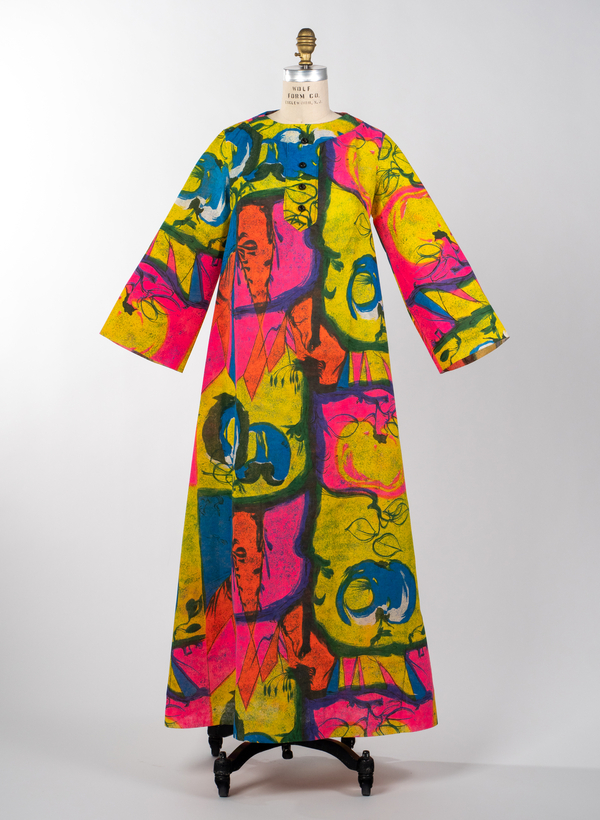Reveling in the fleeting moment of “now,” paper dresses of the 1960s offered a shiny new page of futuristic simplicity during fashion’s most tumultuous decade. An unlikely marriage of avant-garde design and the promotional arms of corporate paper manufacturers, they were also testament to a society-wide belief in the utopian fruits of technology. Drawing a bead on pomposity, “Generation Paper: A Fashion Phenom of the 1960s” opens today at the Museum of Arts and Design (MAD), in New York.
The exhibition originated at the Phoenix Art Museum (PAM), where it began to take shape in 2021, after Phoenix collector Kelly Ellman presented the museum with more than 80 paper garments—mostly unworn, often in their original packaging. She’d amassed them over 30 years, buying from other collectors as well as from specialty stores and the online market.

This was not your Smith-Corona’s onionskin or private stock. The “paper” in paper dresses usually began with a cellulose-based material—think of the papyrus used by ancient scribes—sandwiched around a core of blended synthetics, “an internal scrim,” says PAM curator of fashion design Helen Jean, who organized the show, “that prevents it from being able to rip, and also allows it to flex and move around the body.”
A paper garment could be worn one, two, maybe three times before it was ready for the shredder. It was possible to refresh the garment with a cool iron, but you didn’t want to get it wet. Though the paper wouldn’t dissolve, the flame-retardant chemicals would become less effective.

But why paper? What drove this short-lived trend? Like so much that happened in the 1960s, paper dresses were a rebuff to the idea of clothing as a high-investment object. They embodied a vision of happy obsolescence and pooh-poohed the solemnity of fashion. “I loved the idea that my clothes were not going to last,” recalled Elisa Stone, who designed paper dresses for the Paraphernalia boutiques in New York. “I thought of them as toys,” she told me in 1987, when I was researching my book Radical Rags: Fashion of the Sixties.
“A dress for a night!” says Helen Jean. “Not everyone can afford that; not everyone can do that. But the fantasy and the playfulness that a paper dress offers is just delightful.”
MAD’s show, also organized by Jean, is somewhat different from Phoenix’s. Some items were too fragile to travel to New York, so there are new additions. Asked to name her favorite dress in the show, MAD associate curator Barbara Paris Gifford chooses a dress with matching belt designed by Elisa Daggs for TWA flight hostesses. “Daggs worked with paper as if it were traditional fabric,” explains Gifford. “Her fashions from the period show an understanding of what can be done with new materials beyond the basics.”

Paper clothes were touted at the time as an environmental boon because they wouldn’t last long enough to warrant dry cleaning or a lot of washes, but in terms of conservation their disposability was a problem. And yet, given the fact that retail fashion is one of the most wasteful global industries, and given current experiments in new sustainable materials, a paper-based fabric has distinct potential, especially when fabricated from upcycled or recycled pulpy materials. For now, at New York’s MAD, a watershed generation splashes its dauntless signature across the galleries. —Joel Lobenthal
“Generation Paper: A Fashion Phenom of the 1960s” is on at the Museum of Arts and Design, in New York City, through August 27
Joel Lobenthal is a historian and cultural critic who has written books on subjects ranging from Tallulah Bankhead to Yuri Soloviev, Patricia Wilde to 60s fashion


 Discover
Discover